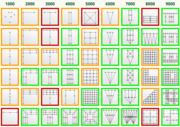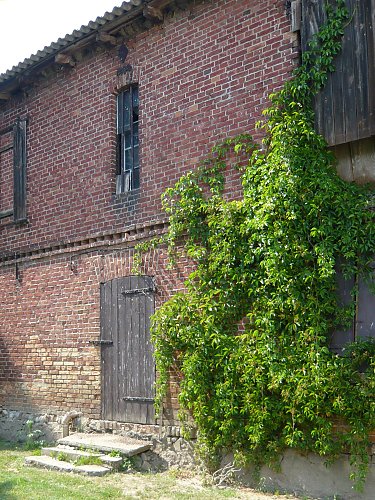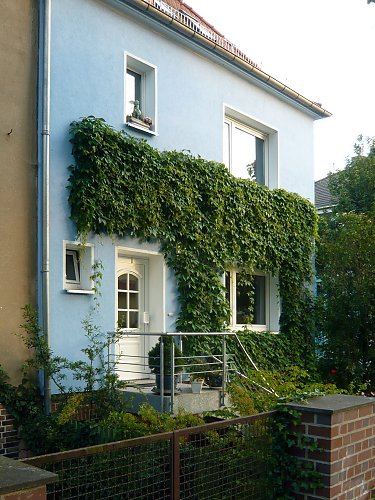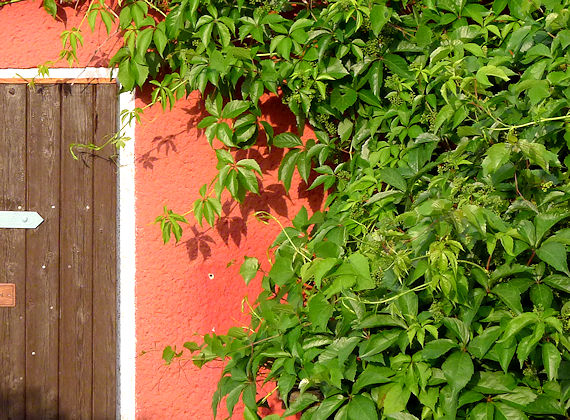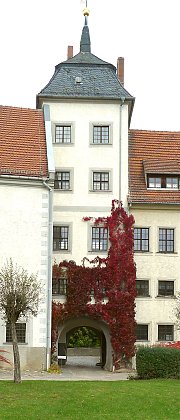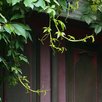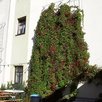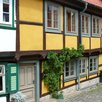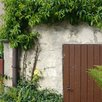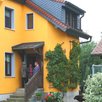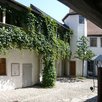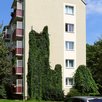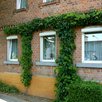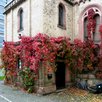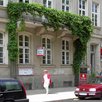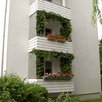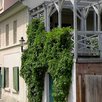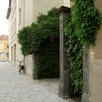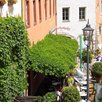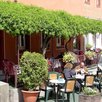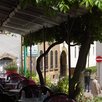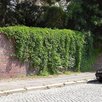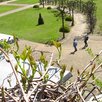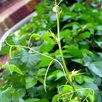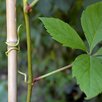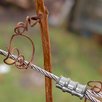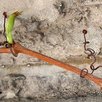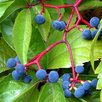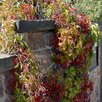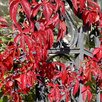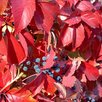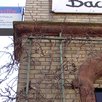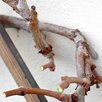Thicket Creeper
Thicket creeper resembles Virginia creeper as one egg does another, however it is *not* a self-clinging climber, and hence offers new perspectives in facade greening. It hardly ever forms those oft-annoying adhesive pads, and with proper climbing supports, damage to buildings is practically impossible. As a small climbing shrub, it is a native of the eastern parts of North America. Its botanical classification and name are debated, but has been described, among others, by Harri Guenther in "Woody Plants in the Gardens of Sanssouci," ("Gehoelze in den Gaerten von Sanssouci"), which forms the base of the information provided here.
Parthenocissus inserta vitacea; 'false Virginia creeper,' 'grape woodbine'
>>> Price
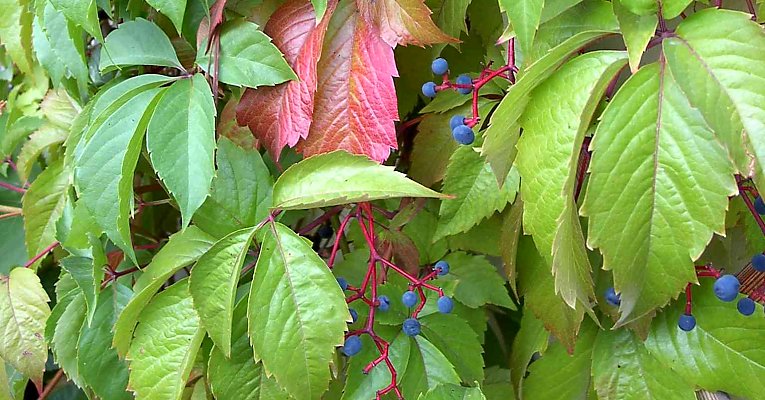
To Thrive...
Thicket creeper needs a sunny (full sun) to (semi-)shaded location; will develop more beautiful autumn colours in the sun. No particular soil requirements. Distance between plants: 3 - 6 metres.
>>> Price
Characteristics and Pruning
Native to the eastern United States, this vine with tendrils (climbing shrub) has a yearly shoot growth of 1-3 metres. Young shoots are green rather than reddish (compared with related species). Can also overhang / cascade like a bridal train. Tendrils are simply forked, usually form no or few adhesive pads. Only occasionally on dark walls and in strong shade will the tendrils form some adhesive pads (1-2 pads per tendril). Very healthy foliage, appearing May - October. Has inconspicuous, tiny green-yellow flowers in early summer, then small deep-blue berries on very red stalks. Readily eaten by birds, followed by the birds' dark-coloured droppings which can stain hanging laundry or terrace decks. Summer and winter prune as needed to restrain the vigorous growth (branch formation). The plants are very easily shaped into any form. At times, pruning in late autumn is required to shorten the long shoots, followed by spur pruning as for grapevines.
Note: In Switzerland, the young vine is regarded as a "neophyte with invasive potential" because it can also spread wild along roadsides and in forests.
Climbing Supports for the Facade
Compatible with all types of rods, trellises, and cables. For compatible wire rope systems, see the chart below. Easy basic wire rope systems are good; medium systems are optimal; for high greenings > 6 m, heavy or even massive systems are recommended.
Wire Rope Systems for Thicket Creeper
Please click on the graphic illustrations for details!
| = suitable | = of limited suitability | = unsuitable |

